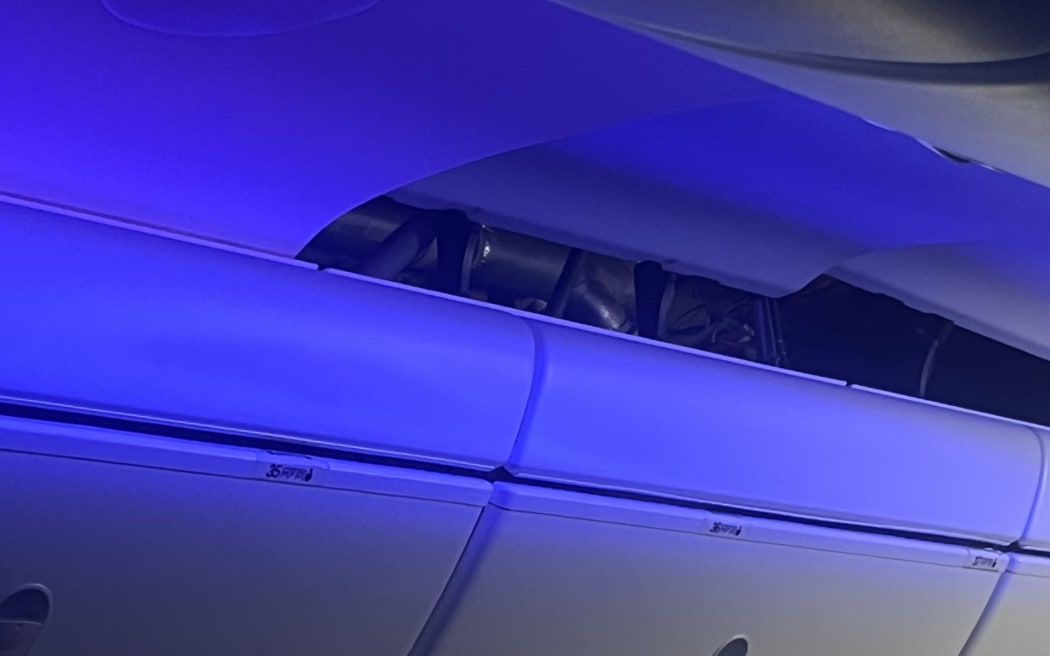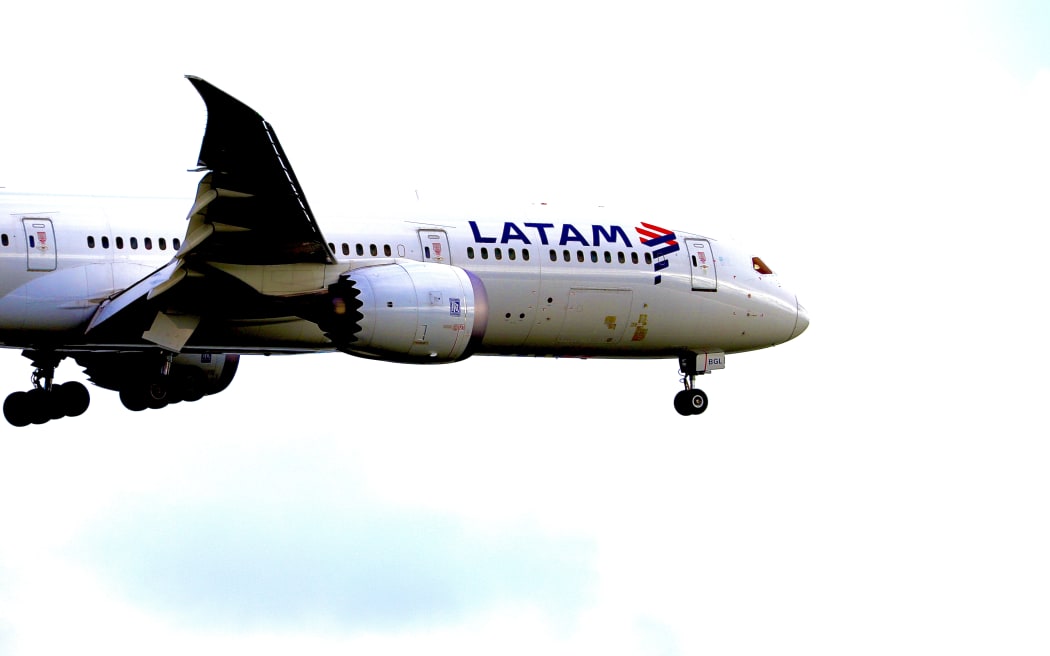A retired Air Force and commercial pilot who has worked as an air safety consultant says it is likely a technical problem was behind the LATAM Airlines flight LA800 incident on Monday.
Passengers on the flight from Sydney to Auckland have described the moment the Boeing 787 Dreamliner suddenly lost altitude, sending dozens of passengers flying into the air. Up to 50 people needed medical treatment.
One passenger, who was in row 14, told RNZ a woman in front of her had a baby about three months old that was thrown into the air.
"And she had been up and down with the baby and didn't have a seatbelt on and they went up and down...
"Everything went up in the air with that baby. There was a two-and-a-half-year-old sleeping on the seat next to us on the other side. He went up in the air and landed on the ground, but his mother was nursing a one-year-old so she couldn't control both," she said.
"When it happened there was no announcements on the plane, no apologies... admittedly, a lot of the crew were injured, plus a lot of the people."
Another passenger said it happened very fast.
"It was just for three seconds but after that it was a smooth flight."

Photo: Supplied/Brian Jokat
Someone he was travelling with described the sensation as like being on a rollercoaster when it drops.
"Everything flew up, went down and it was like very shocking, very shocking, and all the people that was injured, the people screaming, it was very awful."
A man who was in the back row said a girl in front of them "was pretty much on the roof of the cabin".
"The girl next to me hit her head on the cabin. I was lucky."
Four people remain in hospital in moderate but stable conditions.
Technical fault likely
Aviation expert Edward Hunkin - retired Air Force and commercial pilot - told Checkpoint on Tuesday, based on what has been reported there were three possibilities: Clear air turbulence, pilot error or a technical issue.
"Having looked through the information online and listened to the eyewitnesses, it sounds very much to me like it was a technical problem.
"If it was clear air turbulence, the meteorological office would have forecast it and there would have been other reports, because it's quite a quite a busy air route. There would be other reports of aircraft encountering turbulence, and there were no reports. So that's why it discounted clear air turbulence.
"The pilot reported that he'd lost power or appeared to have lost power to the displays in the aircraft. Now, if it was pilot error, I don't think that would have caused the loss of displays.
"So it's far more likely that it was a technical issue that they may have had - a power outage or power problem that caused some of the displays to blank - and of course, they're all integrated into the flight control system."
He said it was "not unknown but very unusual" for all the screens to go blank in a way that affected the flight control system.
The flight dropped about 100m.
"From the sounds of it, the aircraft pitched nose down quite quickly because it went through zero G where people are weightless, the negative G where just like on a rollercoaster under negative G at the top of an incline, people are pushed up against their seatbelts. Of course, if you have no seatbelts on, you're gonna go up and hit the roof.
"But the fact that they only diverged about 300 feet, I think, means that the pilots regain control very, very quickly. Whenever a pilot has the autopilot engaged, he's still monitoring the flight path of the aircraft. And if you've got a problem like this, you would immediately disengage the autopilot and try and establish manual control again."
He said Boeing and the United States' Federal Aviation Administration would be looking at it very closely.

Photo: RNZ / Marika Khabazi
Chile to lead investigation
LATAM said in a statement an investigation was underway into the "strong shake".
The Transport Accident Investigation Commission said the incident occurred in international airspace, and the Dirección General de Aeronáutica Civil would investigate. It would provide assistance at the request of the Chilean agency.
At Auckland Airport on Tuesday evening, RNZ reporter Jordan Dunn told Checkpoint there was a "huge sense of relief in the air" at the check-in, but also "a sense of incredible frustration".
The flight was due to continue to Santiago, Chile. A replacement aircraft will now make the trip at 8pm Tuesday.
Some passengers had to spend hours dealing with Immigration on Monday night, and when they arrived at midday on Monday as directed, no LATAM staff were around.
At 2pm they were told they could not check in until 4pm.
"Since then, they've just been hanging around asking questions - what is going on?"
Some passengers were nervous to be getting on another LATAM flight.
"One woman who will obviously be an exception says she's not so nervous, because she's once been in a plane that had to do an emergency landing on water, which is pretty impressive," Dunn said. "But I imagine not many people here share that same experience."



